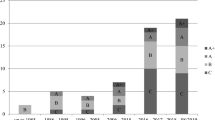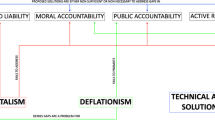Abstract
This paper describes the model of an aircraft maintenance technician (AMT) behaviour working in a real world environment and the application of this model in a computer simulation. The model was derived from the combination of two existing models of cognition (SHELL and RMC/PIPE), based on the paradigm of an information processing system. The simulation structure was developed by transforming the model into an action-execution structure and implementing this model in a computer program based on an object-oriented programming language. An error generation system was coupled to a simple taxonomy of causal correlations between socio-technical and contextual factors operating in an environment defined by a comprehensive task analysis. The simulator can be applied to many aviation maintenance tasks to assist in the design of aviation maintenance training systems through the analysis of the interaction of performance influencing factors and possible AMT performances during the execution of normal maintenance operations. A number of sample outputs from the simulator show the potential of the results to assist in training development. A discussion is also made of other potential applications and the future directions the simulator structure can take.













Similar content being viewed by others
References
Cacciabue PC (1998). Modelling and simulation of human behaviour in system control. Springer, Berlin Heidelberg New York
Cacciabue PC (1999) Modelling and simulation of human behaviour in process control: needs, perspectives and applications. In: Harris D (ed) Proceedings of the 2nd Engineering Psychology and Cognitive Ergonomics Conference, Oxford, UK, 28–30 October 1998, Ashgate, Aldershot, UK
Edwards E (1972) Man and machine: systems for safety. In: Proceedings of the British Airline Pilots Association Technical Symposium, British Airline Pilots Association, London, pp 21–36
Edwards E (1988) Introductory overview. In: Wiener EL, Nagel DC (eds) Human factors in aviation. Academic, San Diego, CA
Hawkins FH (1987) Human factors in flight. Gower, Aldershot, UK
Hobbs A (2000) Maintenance "error": lessons from the ATSB survey. Flight Safe Aust March/April:36–37
Hollnagel E (1993a) Human reliability analysis: context and control. Academic, London
Hollnagel E (1993b) Requirements for dynamic modeling of man-machine interaction. Nucl Engin Des 144:375–384
Hollnagel E, Woods DD (1983) Cognitive systems engineering: new wine in new bottles. Int J Man-Mach Stud 18:583–606
ICAO (1997) Accident/Incident Reporting Manual-ADREP 2000 draft
Jaros A (2000) Panels del Airbus A320. Freeware Panel Designer Association. http://www.flightsimmers.net/fpda. Cited 2000
Kirwan B, Ainsworth LK (1992) A guide to task analysis. Taylor & Francis, London
McRuer DT, Graham D, Kredel E and Reisener W (1965) Human pilot dynamics in compensatory systems—theory, models and experiments with controlled elements and forcing function variations. Report AFFDL-TR65-15, Wright Patterson AFB, Ohio
Neisser U (1967) Cognitive psychology. Appleton-Century-Crofts, New York
Newell A, Simon HA (1972) Human problem solving. Prentice-Hall, Englewood Cliffs, NJ
Norman DA (1981) Categorization of action slip. Psych Rev 88:1–15
Pedrali M, Trasi A (2000) Crew cognitive simulation for flight procedure analysis. In: Proceedings of the International Conference on Human-Computer Interaction in Aeronautics—HCI Aero 2000, Toulouse, France, 27–29 September 2000
Rasmussen J (1986) Information processes and human-machine interaction. Elsevier-North Holland, Amsterdam
Reason J (1990) Human error. Cambridge University Press, Cambridge, UK
Reason J (1997) Managing the risks of organizational accidents. Ashgate, Aldershot, UK
Rouse WB (1980) Systems engineering models of human-machine interaction. North Holland, Oxford, UK
Sheridan TB (1992) Telerobotics, automation and human supervisory control. MIT Press, Cambridge, MA
Stassen HG, Johannsen G and Moray N (1990) Internal representation, internal model, human performance model and mental workload. Automatica 26(4):811–820
Wickens CD (1984) Engineering psychology and human performance. Charles Merrill, Columbus, OH
Acknowledgements
We would like to thank the Volare Group, Italy, for assistance in the preparation of the task analysis.
Author information
Authors and Affiliations
Corresponding author
Rights and permissions
About this article
Cite this article
Cacciabue, P.C., Mauri, C. & Owen, D. The development of a model and simulation of an aviation maintenance technician task performance. Cogn Tech Work 5, 229–247 (2003). https://doi.org/10.1007/s10111-003-0133-z
Received:
Accepted:
Published:
Issue Date:
DOI: https://doi.org/10.1007/s10111-003-0133-z




